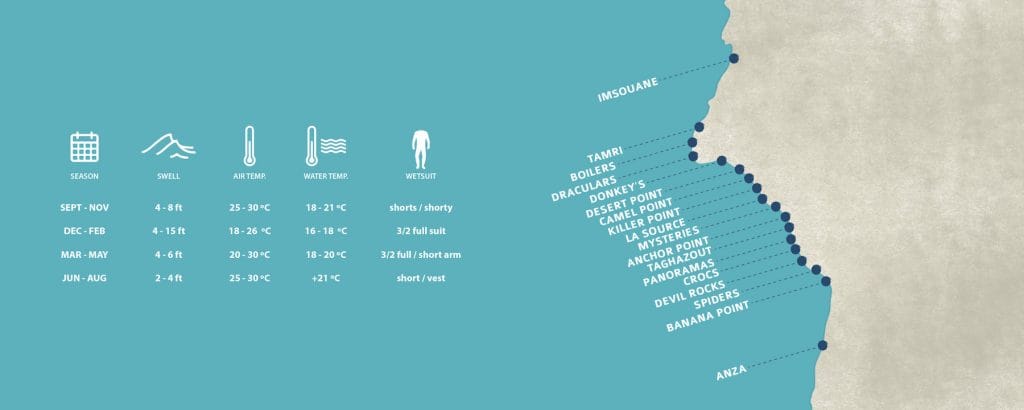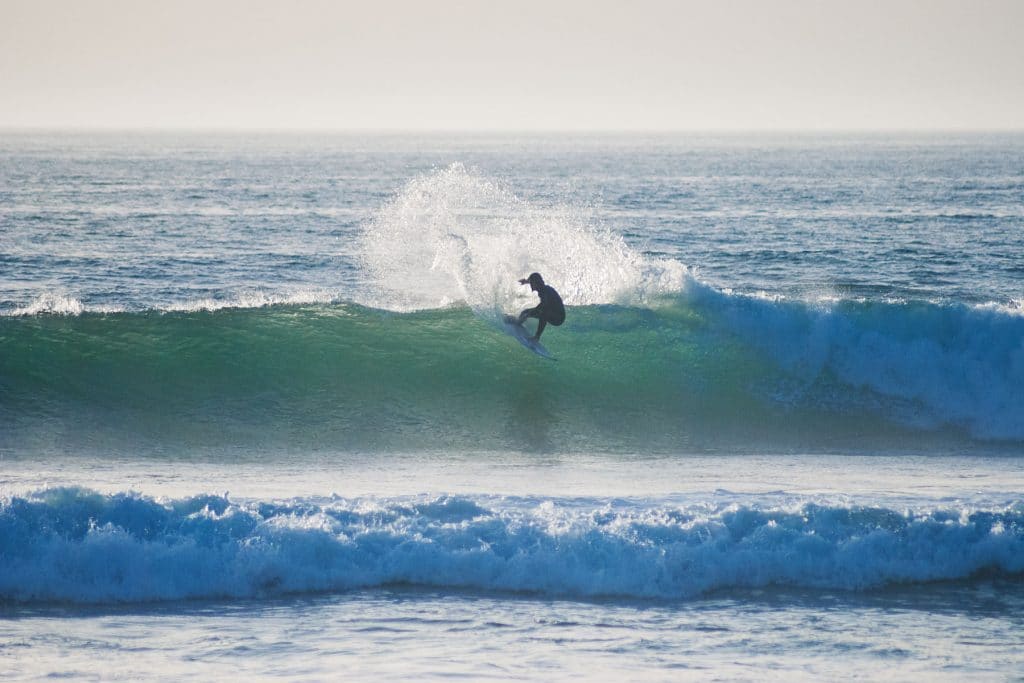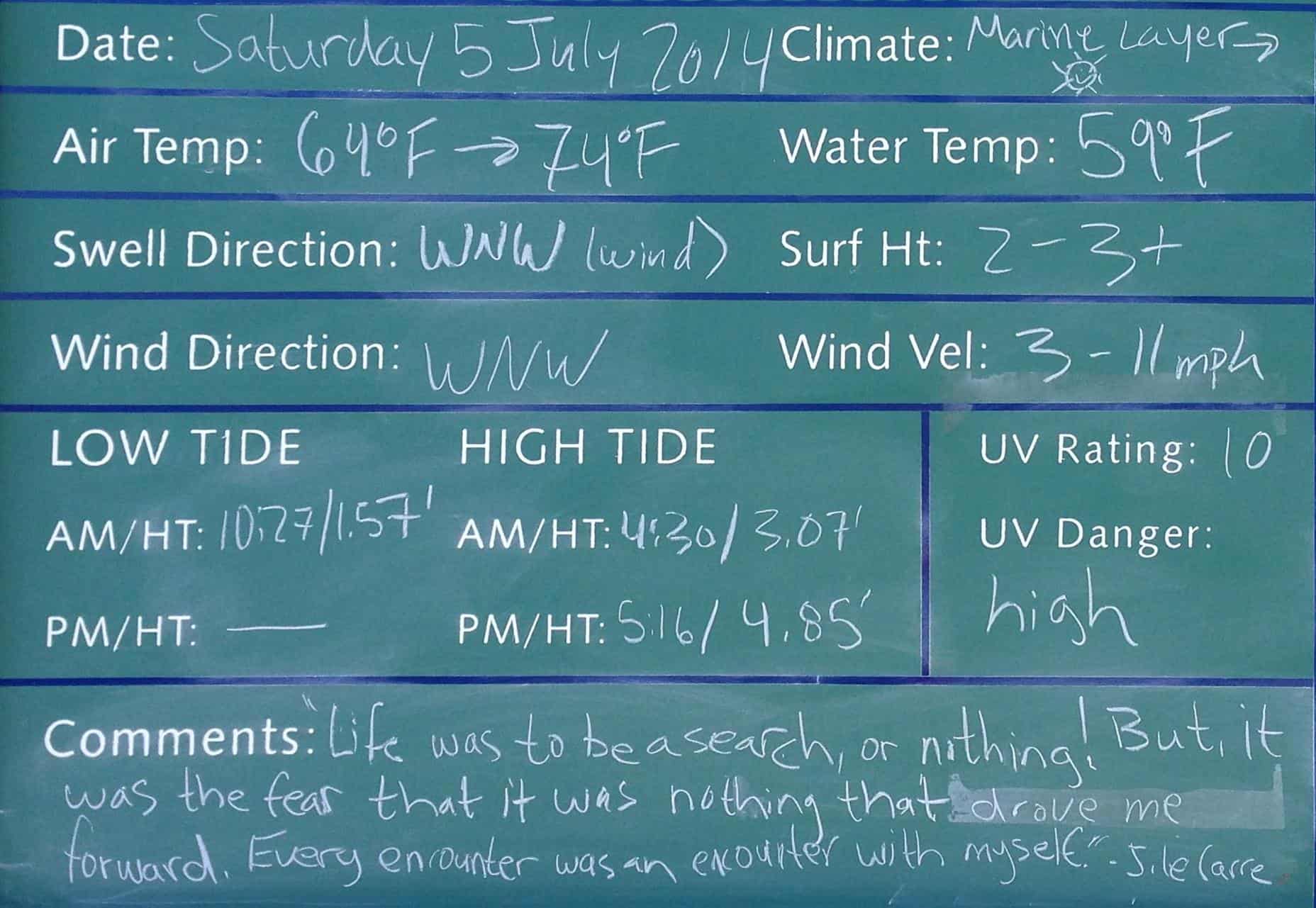If you’ve ever taken a surf holiday, you KNOW how fast surf conditions change. One minute, everyone’s flocking to the same spot to get a chance to ride a group of promising waves, and before even an hour has passed, the waves die out and the ocean begins to resemble a lake, calm and still. In our surf school, in our surf camp or in a private surf lessons the instructor WILL teach you how to surf, but reading surf reports and judging the surf conditions? That’s something you’ll have to learn on your own. We show you how!
“How big is it”?
This is probably the first question you have on your mind. If you’re a beginner, reading a surf report that predicts waves at heights of 9 to 10 feet would probably make you weak at the knees. If you’re a pro surfer though, you live for these days. In other words, which wave height you should be most excited for depends entirely on your current skill level. Generally you should give a longer interval between waves more preference over larger wave heights; they end up lasting longer before they break and hence a smoother ride.

Tides and the direction of the wave
Here’s where your knowledge about your local (or preferred) surf spot comes in handy. Tides and wave direction (or swell direction as it’s more often referred to as) mean different things for different surf spots. A beach with low sandbars would work best for low tides, providing ample breakpoints, while a beach facing west would receive waves coming from the west at ideal surf conditions. Knowing these factors could make or break your next surf trip, so it’s important to keep them in mind.
What winds are best
 Although a lot of factors go into creating waves, it goes without saying that wind speed and direction is quite important for their formation. However, not all winds are created equal, and while some winds mean THE best possible surf conditions, others could result in almost impossible to surf conditions.
Although a lot of factors go into creating waves, it goes without saying that wind speed and direction is quite important for their formation. However, not all winds are created equal, and while some winds mean THE best possible surf conditions, others could result in almost impossible to surf conditions.
Now, you might think an onshore wind (one that blows from the ocean to the shore) would make a wave stronger and better. In reality, however, it only makes the wave choppy and uneven, and in a word, un-surf-able. What you want is an offshore wind (the opposite of an onshore wind), or better yet no wind at all, the conditions that are guaranteed to let waves travel smoothly and provide excellent surf conditions.
Waves and how they break
Ever heard of the terms Beach break, Pointbreak and Reef break? If you’re a surfer, it’s quite impossible not to have. They refer to where the wave breaks in the ocean. While your typical waves are classified as Beach breaks (ones that break 100 yards or less off the shore) providing great conditions for beginners, for the intermediate surfer there is no better wave than a Point Break, which breaks further off the shore and provides THE smoothest ride you could ever hope for. Reef breaks, on the other hand, are large, wild and fast, allowing only the best surfers to enjoy the thrill they have to offer.

